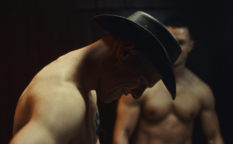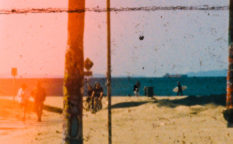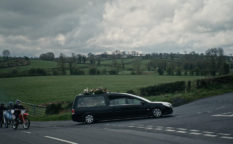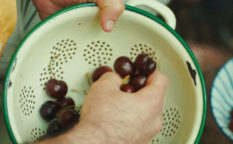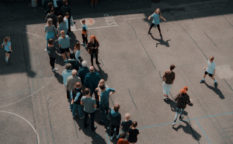Review: The Bubble (2021)
Visions du Réel
International Competition
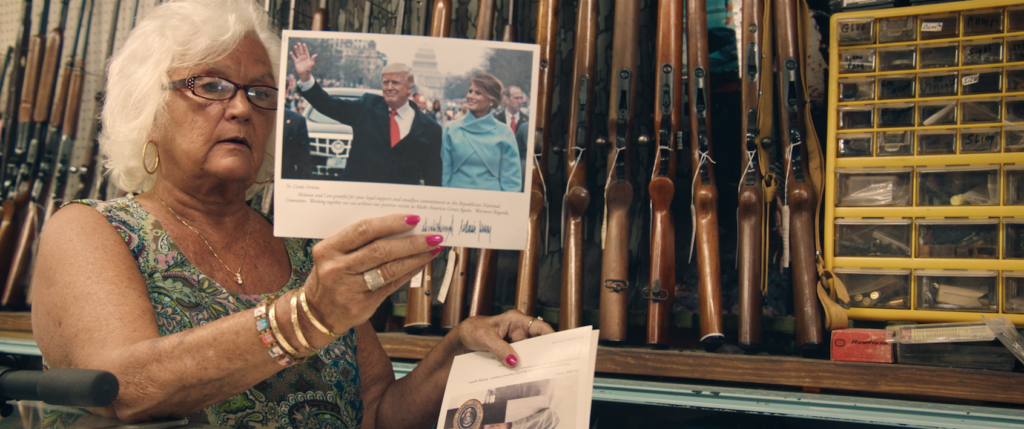
Valerie Blankenbyl’s documentary The Bubble begins with a drone-shot scene of the census-designated retirement community ‘The Villages’ in Florida’s Sumter County, slightly reminiscent of the opener of Jenji Kohan’s TV series Weeds. More than the visual impression, it’s the tune of Malvina Reynolds’ song “Little Boxes” that springs to one’s mind and establishes the immediate mental connection to the show after seeing the seemingly perfect, neatly aligned houses, all uniformed and standardized: “Little boxes on the hillside/ Little boxes all the same.”
But there is no comedy material in this thought-provoking documentary that dives into a parallel universe of a care-free life of the privileged, designed to accomodate all their needs in an isolated community that has no contact to the real world outside its picket-fence.
In the title cards five minutes into the film we get informed that ‘The Villages’ have 54 golf courses, 70 swimming pools, 96 recreation centers and more than 3000 social clubs, and by the look of things – the luxury senior resort will probably double in size in the coming years, further endangering the already fragile local eco-system. Already twice the size of Manhattan (and officially the largest retirement center in the world), this very segregated place of wealth populated by almost all-white elders out of which two thirds are Republicans, is a proper pink bubble with promises of perfection and perpetual entertainment, and an ultimate WASP dream coming true.
The local priest seems to agree with the earthly version of the white paradise and ‘The Villages’ are included in his prayers, because – Lord be praised for all privileges the resort’s inhabitants are pampered with. His flock is logically in frenzy with appreciation.
Less entertained are the bordering communities that fight to save the little normality they had before Harald Schwartz transformed the trailer park ‘The Blossom Gardens’ into a luxury resort together with his son in 1983. Their efforts to stop the further expansion of ‘The Villages’ (which are run as a family business from year zero) are made difficult by the political influence of property developers and the laws the money always manages to bend. In the course of years the population has significantly dissipated; people were sadly forced to sell their properties and move away – some out of financial reasons (“it’s easier to sell, than to grow watermellons”), and others to escape being swallowed by “Disneyland for seniors”, self-proclaimed as “Florida’s friendliest Hometown.” Those who remained are engaged in small-scale acitvism in attempts to reverse the expansion plans, fighting the development giant.
Austrian documentarian Valerie Blankenbyl eschews taking sides, and although her take on the topic can ocasionally be read as a statement, she approaches the inhabitants of ‘The Villages’ with respectful curiosity. As strange as it might be for most of us to see the blown up continental version of an all-in cruiser, for people living there there is nothing more exciting than driving around in a golf-cart, trying to decide what to do next – going to a gun range, playing a round of golf, doing a class in synchronized swimming or belly-dancing, or simply hitting one of the bars to have a drink. For them, there is nothing wrong with enjoying life to the fullest, after all – “it’s how capitalism works” as one resident puts it. Nobody is really raising questions about enormous natural resources wasted on daily bases, cheap labour or the systematic destruction of the environment. The general opinion ruling in the community is that moving to ‘The Villages’ is the money well invested.
Balanced in its focus on both sides of the metaphorical residential fence, the film shows the class imbalance, and the multitude of life choices on one-, and the absence of any on the other side of it. It’s escapism versus survival skills, monetary power versus poverty, wish to defy and deny age versus living life as it comes. ‘The Villages’ residents think nothing was there before they came, not being aware that they share responsibility for a big demographic change. It’s a controlled environment after all – the local radio station is the affiliate of the FOX news, the gun lobby is strong, and the large newspaper is in the hands of the property’s owners. The bubble, it is, and it seems that it’s impossible to burst its pink membrane.
The one person who successfully walks in and out of that membrane is the cinematographer Joe Berger with his lensing of two different worlds – the one polished to the maximum, and the other unchanged, beautiful in its wild dominance over humans. Notable is also the original score by Adam Lucas, that brings something of a Tatiesque spirit to the film.
Unlike the eight residents of ‘The Villages’, its management refused to speak to the filmmaker, and the staff even tried to prevent the crew from shooting some of the scenes on public spaces, despite of all official permits issued by the sheriff’s office.
The Bubble, which world-premiered at Visions du Réel in Nyon, is a compelling documentary about the business with retirement which opens questions not only about our view on ageing, but also about our sense of self-entitlement. How much is enough, and what is the long-term price of it?
Original Title: The Bubble
Countries: Switzerland/ Austria
Language: English
Year: 2021
Runtime: 91′ (52′ TV Edit)
Produced by: Dario Schoch, Rajko Jazbec
Production: Catpics, Golden Girls Filmproduction
Co-Producers: Karin C. Berger, Arash T. Riahi
Written/ Directed by: Valerie Blankenbyl
Cinematographer: Joe Berger
DIT: Dennis Larkin
Drone Operators: Don Wiley, Vern Edwards, Jordan Klein
Sound Design/ Re-Recording Mix: Jacques Kieffer’
Sound Recordist: Benoît Barraud
Additional SFX Editor: Jakob Eisenbach
VFX Artists: Christoph Hofer, Josef Böhm
Music: Adam Lucas
Additional Music: Thomas Obernosterer
Editor: Nela Märki
Grading: David Hughes

